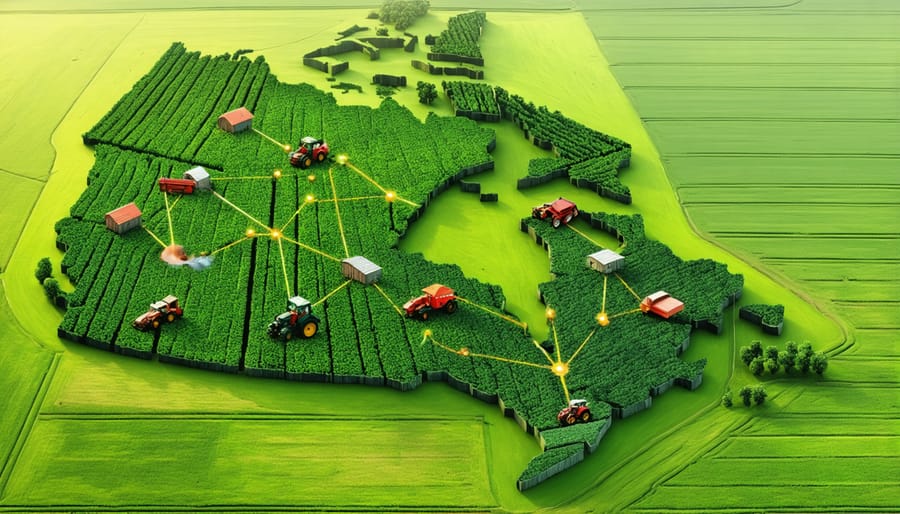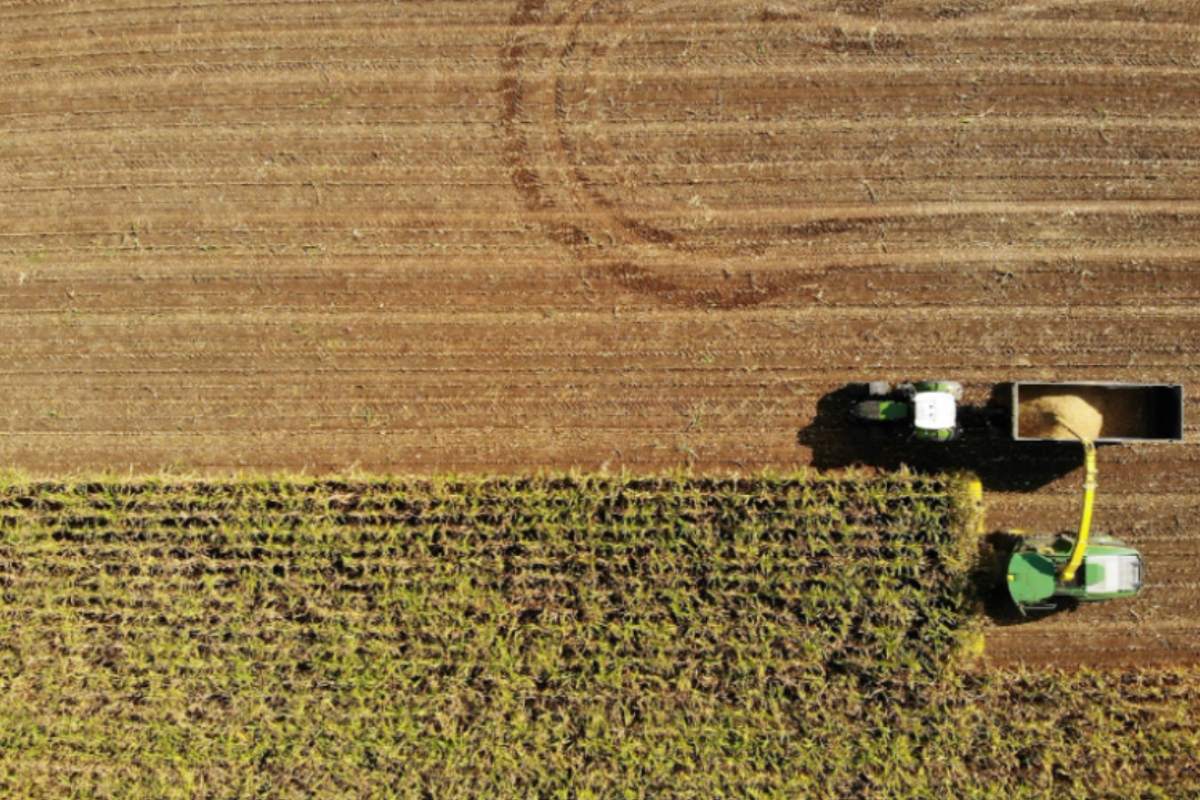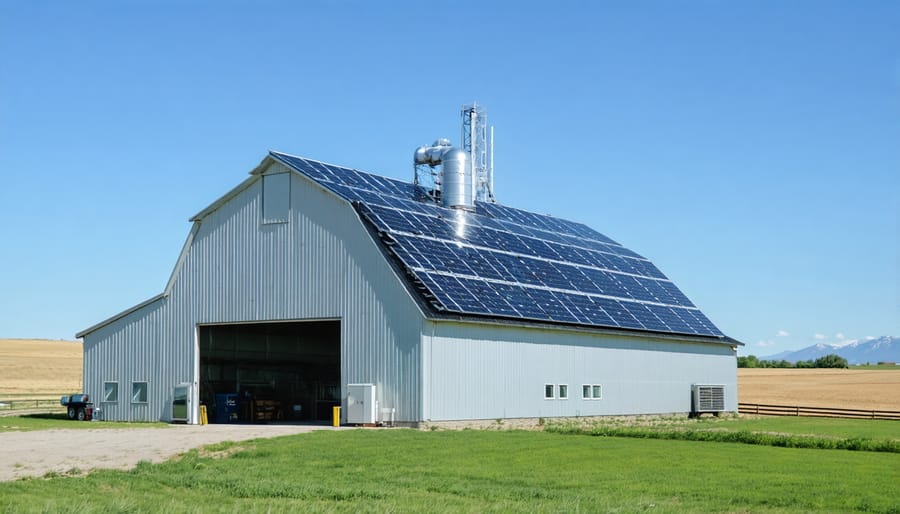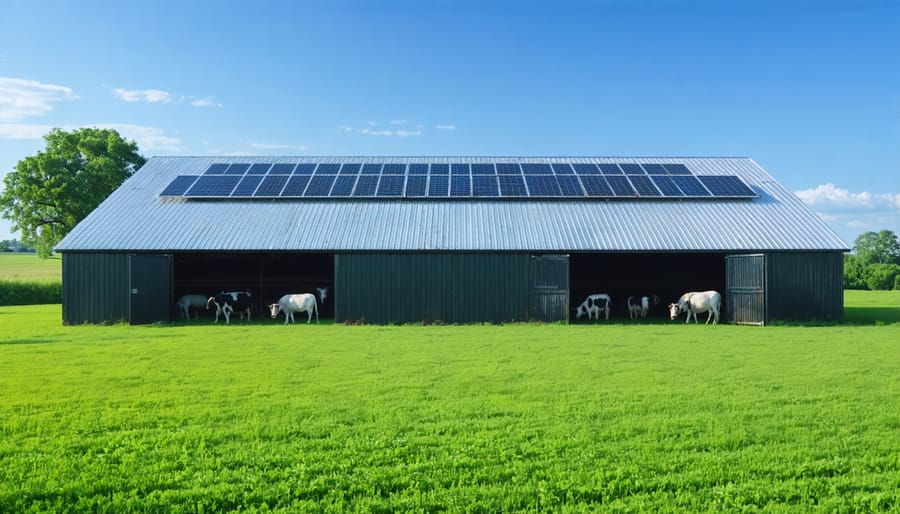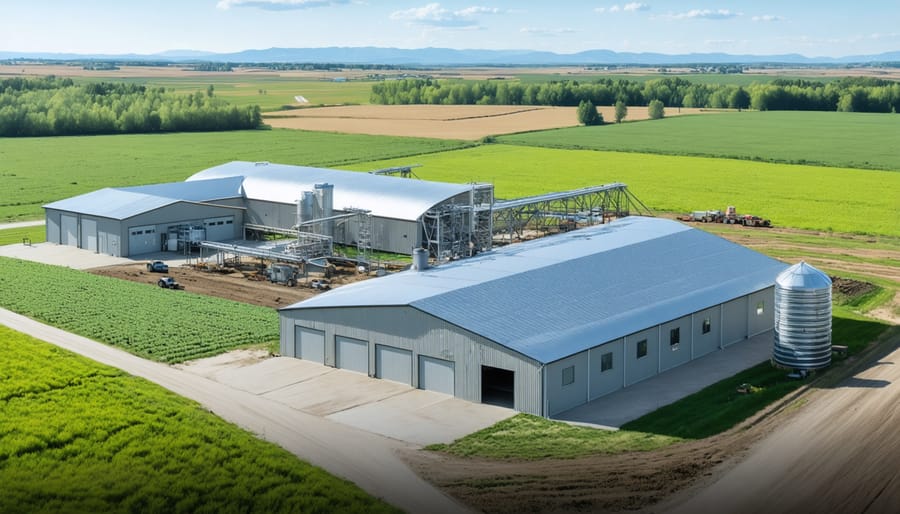As extreme weather patterns intensify across Canada’s agricultural regions, climate-resilient crops have become more than just an option – they’re now essential for farm survival and food security. These specialized crop varieties, engineered to withstand drought, flooding, and temperature fluctuations, are transforming how Alberta farmers approach their growing seasons and manage risk.
Leading agricultural research stations in Western Canada have developed remarkable new varieties of wheat, canola, and pulses that can maintain yields despite challenging conditions. These crops not only survive environmental stresses but continue producing reliable harvests when traditional varieties might fail. For example, drought-tolerant wheat varieties developed at the University of Saskatchewan can maintain up to 80% of normal yields with 30% less rainfall.
The shift toward climate-resilient agriculture represents both a challenge and an opportunity for Canadian farmers. While adopting new varieties requires initial investment and learning, these crops offer crucial advantages: reduced irrigation needs, better disease resistance, and more consistent yields even in unpredictable weather. With climate models predicting more volatile growing conditions across the prairies, these resilient varieties aren’t just about surviving today’s challenges – they’re about building a sustainable future for Canadian agriculture.
[Word count: 156]
Understanding Climate-Resilient Crops in Alberta’s Context
Key Traits of Weather-Tough Crops
When selecting climate-resilient crops for Alberta’s challenging conditions, several key traits stand out as essential for success. Drought tolerance tops the list, with crops developing deeper root systems and efficient water-use mechanisms. These plants can maintain productivity even when rainfall is scarce, typically requiring 30-40% less irrigation than conventional varieties.
Heat resistance is another crucial characteristic, with resilient crops able to withstand temperatures up to 35°C without significant yield loss. These varieties often have specialized leaf structures that reduce water loss and protect against intense sunlight.
Disease resistance plays a vital role, particularly in our warming climate where traditional pest patterns are shifting. Many weather-tough varieties show natural resistance to common Alberta crop diseases, reducing the need for chemical interventions.
Soil adaptability is equally important, with resilient crops thriving in various soil conditions. The best performers can maintain yields in both heavy clay and sandy loam soils, adapting to pH levels between 5.5 and 8.0.
Early maturity is becoming increasingly valuable, allowing crops to complete their growth cycle before extreme weather events hit. These varieties typically mature 10-14 days faster than traditional options, providing crucial flexibility in our unpredictable growing season.
Alberta’s Climate Challenges and Crop Selection
Alberta’s agricultural landscape faces unique climate challenges, including unpredictable precipitation patterns, extreme temperature fluctuations, and increasingly frequent drought conditions. These challenges have prompted farmers to adapt their crop selection strategies and implement advanced water management systems to ensure sustainable production.
Drought-tolerant varieties of wheat, particularly Canada Prairie Spring (CPS) and Canada Western Red Spring (CWRS), have shown remarkable resilience in our variable climate. Pulse crops like lentils and field peas are gaining popularity due to their ability to thrive in moisture-limited conditions while improving soil health through nitrogen fixation.
Short-season canola varieties, developed specifically for Alberta’s growing conditions, offer farmers flexibility in planting dates and better drought tolerance. These adaptations help manage the risk of early frost and extended dry periods that are becoming more common in our region.
Many Alberta farmers are also incorporating hardy forage crops like sainfoin and drought-resistant alfalfa varieties into their rotation systems, providing both livestock feed security and soil protection during extreme weather events.
Top Climate-Resilient Crops Thriving in Alberta
Drought-Hardy Wheat Varieties
Several drought-hardy wheat varieties have shown remarkable resilience in Alberta’s increasingly dry conditions, even in areas with limited irrigation solutions. AAC Paramount, developed specifically for Western Canadian conditions, has demonstrated exceptional drought tolerance while maintaining protein content above 13%. This variety typically yields 3.5-4.0 tonnes per hectare in dry conditions.
The CDC Landmark VB variety has gained popularity among Alberta farmers for its impressive root system that can access moisture deep in the soil profile. Local farmer Sarah Thompson from Lethbridge County reports consistent yields even during the 2021 drought season, averaging 3.2 tonnes per hectare when regional yields dropped significantly.
AC Strongfield and AAC Crossfield are two other varieties showing promise, particularly in the brown and dark brown soil zones. These varieties feature earlier maturity dates, allowing them to complete their growth cycle before the peak of summer heat stress. Both varieties have demonstrated yield stability, with AC Strongfield maintaining approximately 85% of its yield potential during moisture-stressed conditions.
For farmers considering transitioning to drought-hardy varieties, the Alberta Wheat Commission offers variety performance trials and seed testing programs. These resources help producers make informed decisions based on their specific growing conditions and moisture availability.
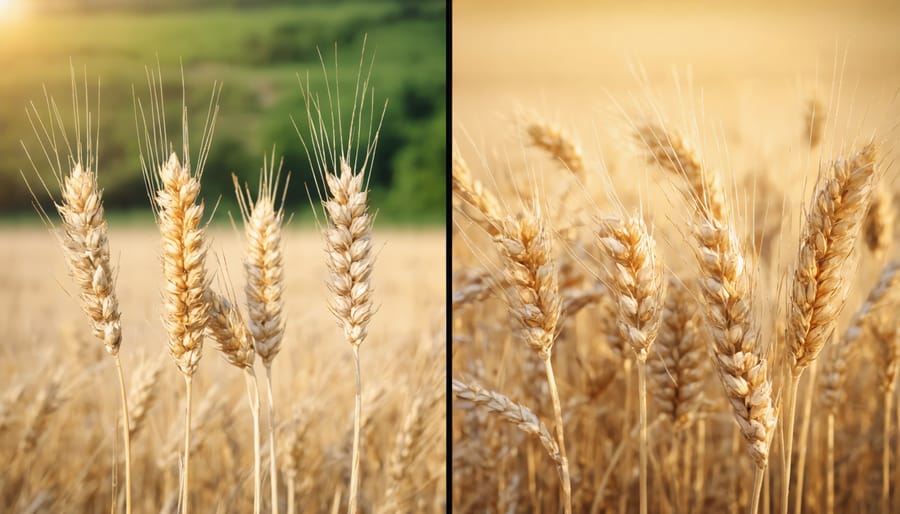
Cold-Tolerant Pulses
Pulses have proven to be remarkable adaptors to Alberta’s varying climate conditions, with several varieties showing impressive cold tolerance. Field peas, in particular, have demonstrated excellent resilience to early spring frosts, allowing farmers to seed earlier and maximize the growing season. These hardy plants can withstand temperatures as low as -4°C during their early growth stages.
Lentils grown in central Alberta have also shown promising cold-hardiness traits. Red lentils, especially the CDC Maxim variety, maintain their vigour even when exposed to spring temperature fluctuations. Local producer Sarah Thompson from Lacombe County shares, “We’ve successfully grown lentils through some challenging springs, with the crops bouncing back even after late May frosts.”
Faba beans are emerging as another cold-tolerant option, with some varieties surviving temperatures down to -6°C. Their robust root system helps them withstand frost heaving, making them particularly suitable for areas prone to spring temperature swings. The Small Food Producers Association of Alberta reports that faba bean acreage has increased by 30% over the past five years, largely due to their climate resilience.
For best results, farmers are encouraged to select certified cold-tolerant varieties and implement proper seeding depth strategies. Early seeding, when soil temperatures reach 3°C, combined with appropriate soil moisture management, has shown to enhance the cold tolerance of these pulse crops significantly.
Weather-Resistant Canola Innovations
Recent advances in canola breeding have yielded remarkable new varieties specifically engineered to withstand Alberta’s increasingly unpredictable weather patterns. These innovations focus on three key resilience factors: drought tolerance, heat resistance, and enhanced pod shatter resistance.
Leading the way is the HT-3000 series, developed through collaboration between Canadian research institutions and local seed producers. These varieties can maintain stable yields even when facing 30% less rainfall than traditional canola crops, making them ideal for farmers in drought-prone regions of southern Alberta.
“We’re seeing these new varieties perform exceptionally well under stress conditions,” notes Sarah Thompson, an Alberta-based agronomist. “Farmers who switched to weather-resistant varieties last season reported yield losses of only 5-8% during extreme heat events, compared to 20-25% losses in conventional varieties.”
The latest breakthrough comes in pod shatter resistance technology, which helps prevent seed loss during severe storms and high winds. The PS-Plus varieties can withstand wind gusts up to 80 km/h without significant pod damage, providing crucial protection during Alberta’s unpredictable harvest season.
These weather-resistant varieties also demonstrate improved emergence in cold soils, allowing for earlier seeding dates and longer growing seasons. This adaptation has proven particularly valuable for farmers in central and northern Alberta, where short growing seasons have traditionally limited production options.
For optimal results, experts recommend pairing these new varieties with appropriate soil management practices and regular moisture monitoring to maximize their resilient characteristics.
Storage Solutions for Climate-Resilient Crops
Temperature Control Systems
Modern storage facilities in Alberta are increasingly adopting sophisticated temperature control systems to protect climate-resilient crops. These systems work alongside drought management technology to create comprehensive crop protection solutions.
The latest storage facilities utilize smart sensors that maintain temperatures between 4°C and 10°C, depending on crop type. For example, pulse crops like lentils and chickpeas require cooler storage around 5°C, while cereals can tolerate slightly higher temperatures up to 8°C. These precise controls help prevent moisture build-up and reduce the risk of spoilage.
Many Alberta farmers are installing automated climate control systems that adjust temperature and humidity levels based on real-time monitoring. These systems typically include:
– Multiple temperature sensors placed throughout the storage facility
– Automated ventilation systems that respond to temperature fluctuations
– Smart controllers that maintain optimal conditions 24/7
– Remote monitoring capabilities via smartphone apps
Local farmer Sarah Thompson from Lethbridge shares, “Since installing our smart storage system, we’ve reduced crop losses by 30% during extreme weather events. The ability to monitor conditions remotely gives us peace of mind, especially during unpredictable weather patterns.”
The initial investment in these systems typically ranges from $15,000 to $40,000, depending on facility size. However, most farmers report recovering costs within 2-3 growing seasons through reduced crop losses and improved quality maintenance. Provincial programs often offer cost-sharing opportunities for implementing these technologies, making them more accessible to small and medium-sized operations.

Moisture Management Strategies
Effective moisture management is crucial for preserving the quality of climate-resilient crops during storage. Here in Alberta, where weather conditions can be unpredictable, maintaining optimal moisture levels requires a multi-faceted approach.
First, ensure proper drying before storage. Crops should be dried to their recommended moisture content levels – typically 14% for wheat and barley, and 10% for canola. Using moisture meters regularly helps monitor levels accurately. Local farmer Dave Thompson from Lacombe shares, “I’ve found that pre-drying crops in the field, when possible, reduces energy costs and storage risks significantly.”
Install proper ventilation systems in storage facilities to maintain consistent airflow. This includes both powered ventilation and passive systems like roof vents. Consider using temperature cables to monitor hot spots, which often indicate moisture issues before they become visible problems.
Strategic bin placement also plays a crucial role. Position bins on elevated, well-drained ground with a slight slope away from the foundation. This prevents ground moisture from seeping up into stored crops. Use appropriate bin liners and seals to prevent moisture infiltration from rain and snow.
For additional protection, consider installing moisture barriers between the concrete foundation and grain contact points. Local agricultural engineer Sarah Martinez recommends using food-grade desiccants in storage areas during particularly humid periods.
Regular inspection is essential – check stored crops weekly for signs of moisture problems like clumping or musty odours. Document moisture readings and weather conditions to help identify patterns and adjust strategies accordingly. Remember, prevention is always more cost-effective than dealing with spoilage after the fact.

Implementation Success Stories
The success of climate-resilient crops in Alberta is best illustrated through the experiences of local farmers who have adapted their operations to changing weather patterns. Sarah McKenzie, a third-generation farmer from Leduc County, successfully transitioned 40% of her wheat fields to drought-resistant varieties in 2021. By implementing smart farming systems and selecting hardy wheat varieties, she maintained yields despite receiving 30% less rainfall than average.
In the Peace River region, James Thompson’s farm showcases the potential of diversification with climate-resilient crops. His rotation of quinoa, hemp, and short-season corn varieties has proven remarkably successful, with crop yields remaining stable even during extreme weather events. Thompson’s storage innovation includes a modified grain bin system with enhanced ventilation, which has reduced moisture-related losses by 85%.
The Miller family farm near Medicine Hat demonstrates how traditional knowledge can combine with modern resilient varieties. Their indigenous corn varieties, adapted over generations for short growing seasons, have consistently outperformed conventional hybrids during heat waves. They’ve successfully integrated these heritage crops with modern storage solutions, including solar-powered aeration systems.
Perhaps most inspiring is the story of the Prairie Collective, a group of five farms in central Alberta that collaborated to test different climate-resilient varieties. Their shared knowledge and resources led to the successful introduction of drought-resistant lentils and early-maturing canola varieties. The collective’s innovative approach to crop storage, using temperature-monitored bins with automated moisture control, has resulted in a 40% reduction in storage losses.
These success stories highlight how Alberta farmers are adapting to climate challenges while maintaining productive and profitable operations. Their experiences prove that combining resilient crop varieties with proper storage solutions can create sustainable farming systems that thrive in our changing climate.
As we’ve explored throughout this article, transitioning to climate-resilient crops is a vital step for Alberta farmers in adapting to our changing climate. These hardy varieties offer increased yield stability, better drought tolerance, and improved disease resistance, making them a smart choice for long-term farm sustainability.
To begin your journey with climate-resilient crops, start by connecting with your local agricultural extension office or joining farmer-led research groups in your area. Consider starting small with test plots of drought-resistant wheat or cold-hardy pulses, carefully documenting your results. Take advantage of available resources through Alberta Agriculture and Forestry, and don’t hesitate to reach out to experienced farmers who have already made the transition.
Remember, building climate resilience is a community effort. By sharing experiences and supporting each other, Alberta farmers can create a more sustainable and prosperous agricultural future. Take that first step today – your farm’s future may depend on it.


